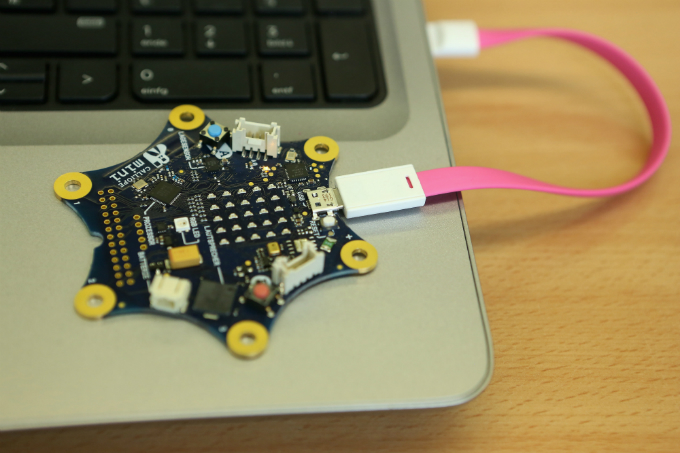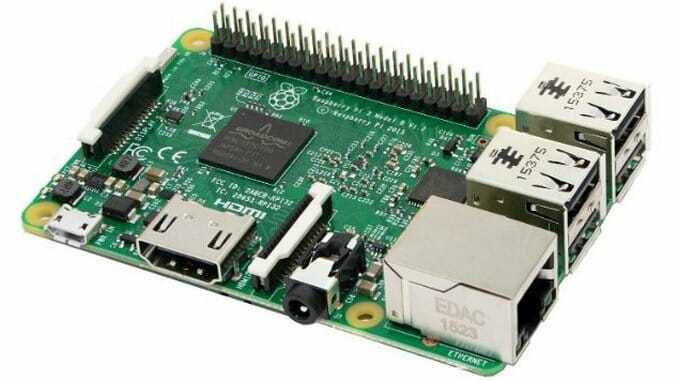It’s likely you’ve heard of Raspberry Pi. Sounding more like a dessert, it’s a great way to learn more about computers and what can be accomplished with one. Starting out as a teaching aid to promote computer science in schools and developing countries, it’s quickly grown into a tech phenomenon for those that want to dabble in something more than just switching their PCs on.
With one, you’re able to do pretty much anything. From creating your own robot servant to using it as a retro gaming machine, it’s a simple piece of computing hardware that can grow with your abilities. But where do you start? Let’s take a look at the basics.
What You Need
First of all, you’re going to need to buy a Raspberry Pi 3. Costing about $35 for the basic unit, you might want to spend a few extra bucks to get a case so it looks a little more stylish than just having a naked motherboard. You’ll also need a micro USB based power supply, and a micro SD card. Many retailers offer starter packs, meaning this will only run you about $45-50.
As well as that, you want a keyboard and mouse combo on hand, along with a TV or monitor, so that you can interact with the Raspberry Pi 3. It’s possible to access it remotely but starting out, it’s easier to just stick with the physical solution of a screen and keyboard/mouse.
Finally, you want to be willing to experiment. Remember – you can’t really break anything. At least not permanently. Be willing to learn, Google if need be and just poke around at what’s going on. It’s simple stuff, but if you’re a total novice, it might take a little time to gel with you.
Now What Do I Do?
 A Raspberry Pi-like device designed to teach kids basic computer coding. Photo by Adam Berry/Getty Images.
A Raspberry Pi-like device designed to teach kids basic computer coding. Photo by Adam Berry/Getty Images.
You need an operating system. Raspberry Pis don’t work with Windows or MacOS, meaning you’re diving into a world of Linux based operating systems. Fortunately, there are plenty of choices, and each is pretty simple to get to grips with. The biggest decision is knowing what you’re planning to do with your Pi.
For a general, all-purpose operating system, Raspbian is the perfect starting point. Working like most other systems you’ve used, it comes with a variety of preinstalled apps such as office suite, LibreOffice and even a rudimentary version of Minecraft. The best way to install it is through NOOBS (New Out Of the Box Software) which handles all the more complicated parts of getting set up.
Raspbian gets you all started with another regular desktop PC but how about doing something a little different? One great option is to install RetroPie. It’s an operating system that effectively turns your Pi into a retro gaming machine. All you have to do is provide it with legally acquired ROMs of the old games you still own. You can buy Pi based games controllers that look a lot like SNES or Genesis controllers, meaning it’s almost like playing the real thing.
More interested in turning your Pi into a media center or jukebox? OSMC covers all your media playing needs, acting kind of like Kodi. You can use it to play almost every media format out there, with a simple to use interface that your whole family will be able to figure out.
For a music focused media center, Pi MusicBox is perfect. It allows you to stream Spotify, Google Music, Soundcloud, Webradio, Podcasts and many more interfaces through your Pi. Much like the other options here, it takes minutes to get started, providing you with a music solution that would normally cost a lot more via more populist choices.
Building On Your Success
Those are just some of the easy ideas that you can incorporate with your Raspberry Pi, but there’s a much bigger world out there. The system is designed in a way that means it can grow as your abilities grow. Its modular layout means there’s always more optional hardware components for you to add to your system. It can be as simple or as advanced as you like.
Once you’ve mastered the basics, you can be tempted to try some other solutions with some additional pieces of hardware. Consider setting up a motion sensor camera, or a simple weather station to keep an eye on your local weather conditions. Operating systems such as MotionEyeOS can be installed, turning your Pi into an advanced video surveillance system with the right hardware.
Looked on enviously at your friend’s car with a touchscreen dashboard? You can implement something similar via a touchscreen monitor, a Raspberry Pi 3 and AutoPi.
In no time, you’ll end up with a home full of Raspberry Pis completing a variety of different tasks for you.

 A Raspberry Pi-like device designed to teach kids basic computer coding. Photo by Adam Berry/Getty Images.
A Raspberry Pi-like device designed to teach kids basic computer coding. Photo by Adam Berry/Getty Images.